DJI Mavic Pro review
Speed demon, shutter bug, aerial acrobat - DJI’s latest drone does it all
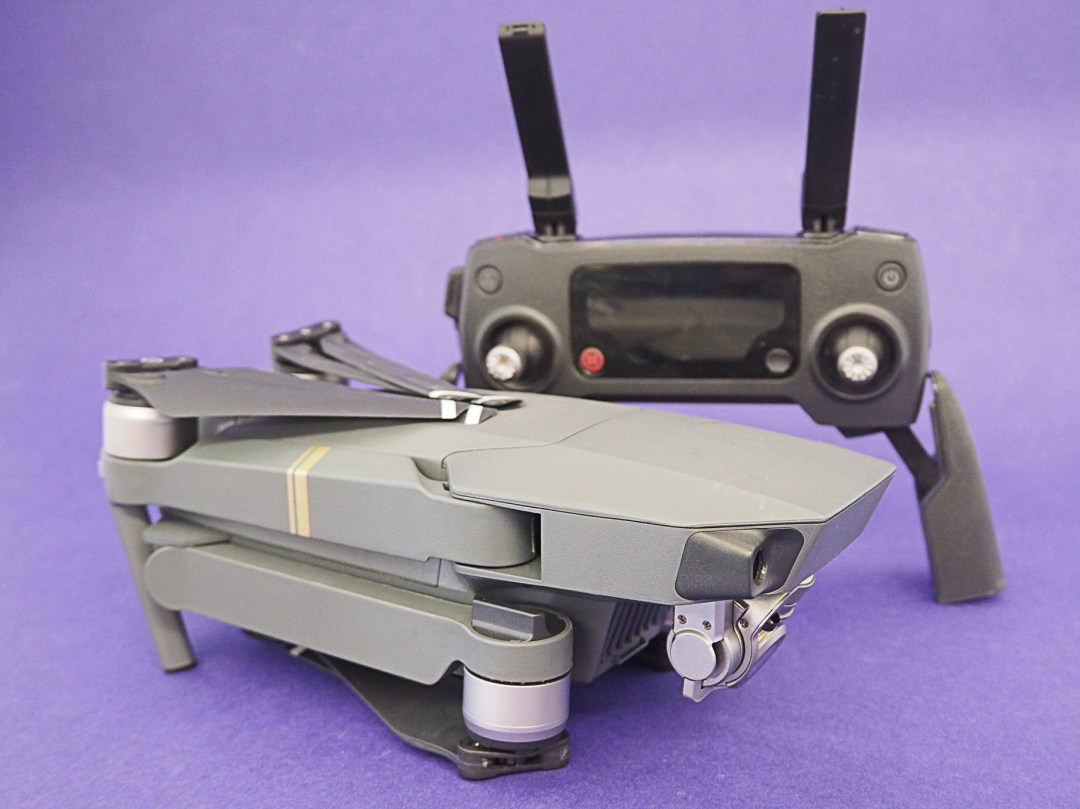
Drones are getting smaller and smarter all the time, but the Mavic Pro feels like DJI’s development team has jumped to Warp speed nine.
This tiny quadcopter is jam-packed with tech, squeezing everything we love about the Phantom 4 into a smaller shell – then leaving it in the dust with some truly fantastic new features. And that’s before you fold the rotors away and sling it into a bag.
It’s so small you can hold it in one hand, but it’s faster, more intelligent and less likely to crash than anything that’s come before it. Throw in a gimbal-stabilised 4K camera, and you’ve got everything you need for pin-sharp aerial photos and video.
After putting one through its paces, it’s clear other drone companies are going to have to step up their game – DJI just left everything else on the launchpad.
SIZE MATTERS


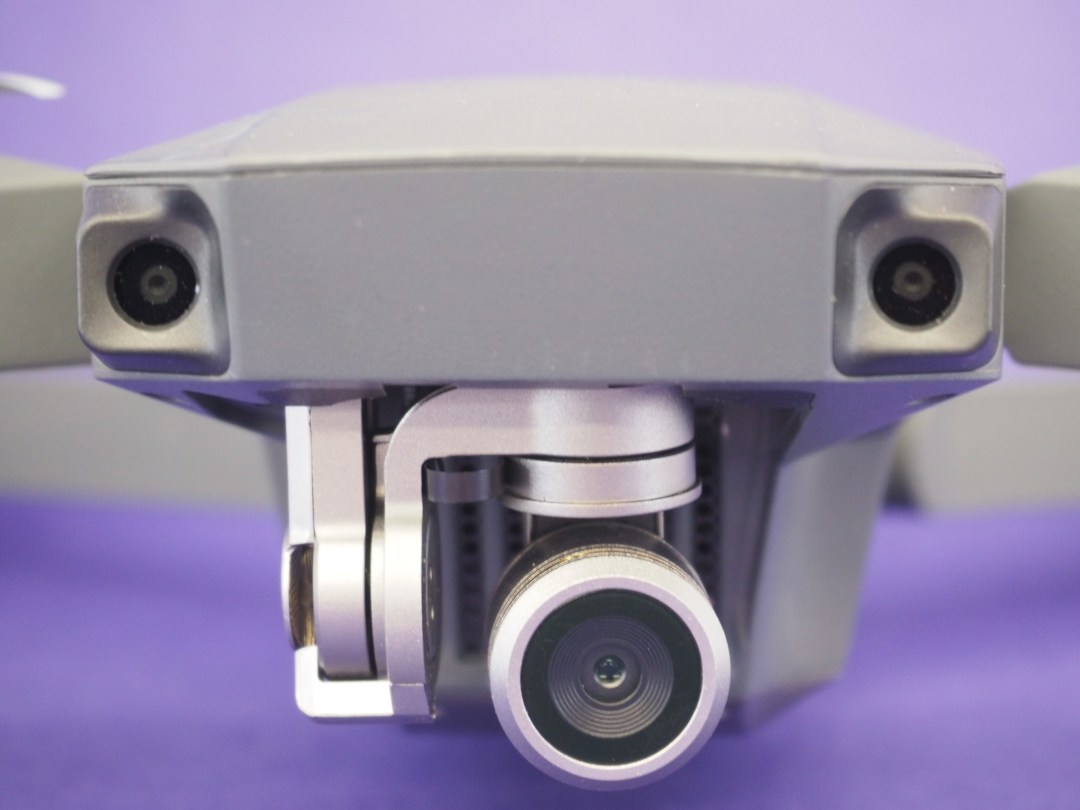
The Mavic Pro is small. Seriously, what is this – a drone for ants? Folded up, it’ll barely take up more room in a bag than a water bottle. That makes it even smaller than GoPro’s Karma.
When it’s time to fly, flipping out the wings takes seconds. You don’t even need to fix the articulated propellors into place – they’ll sort themselves out through G-force when you start the motors.
Build quality is reassuringly sturdy, too. It feels like the Mavic could could take a bit of punishment and still be able to fly – not that I was willing to risk incurring the wrath of DJI’s PR team to find out.
That gunmetal grey colour scheme makes it look properly mean, too – like a prototype military robot grasshopper getting ready to pounce.
Without fixed wings, you don’t need a dedicated transport box – just squeeze it into your regular bag with all your other gear. The camera and gimbal are protected by a bubble dome, so you don’t have to worry about them getting damaged while you’re on the move. Just remember to remove it before you fly, unless you want lens flares in bright sunlight.
The whole thing looks brilliantly simple, but don’t let that fool you: there’s some serious tech cleverness going on under the hood.
BIGGER BROTHER › DJI Phantom 4 review
ALL-SEEING EYE
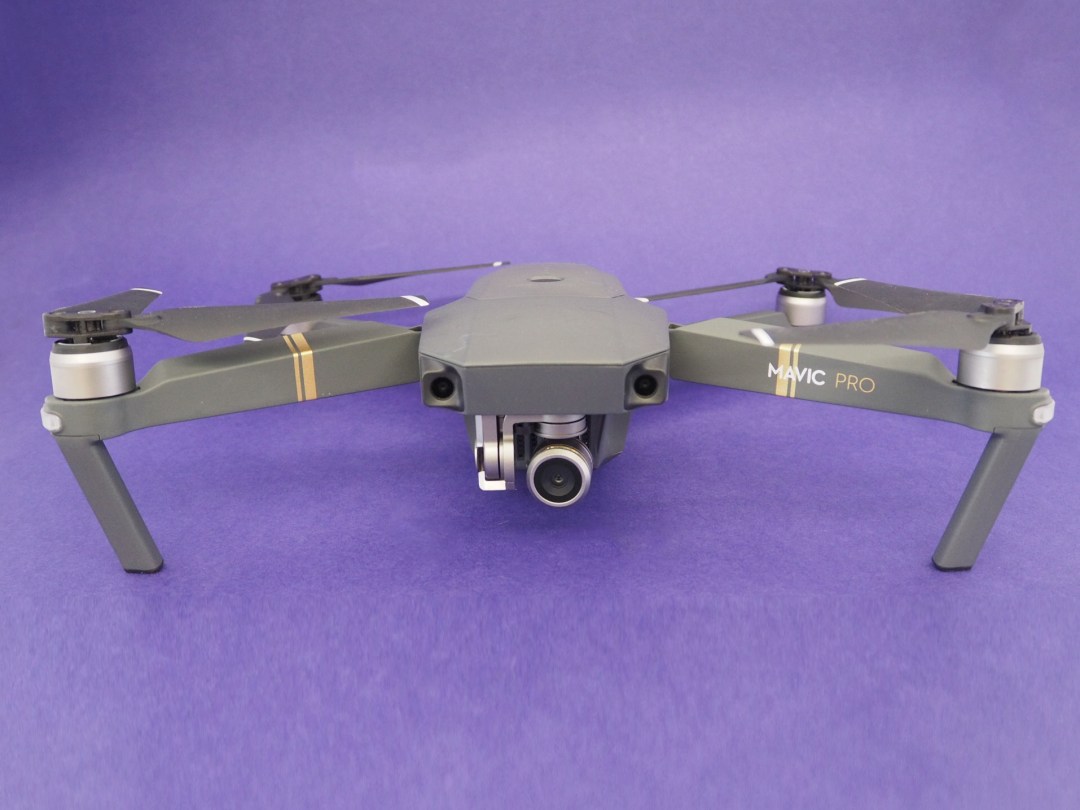
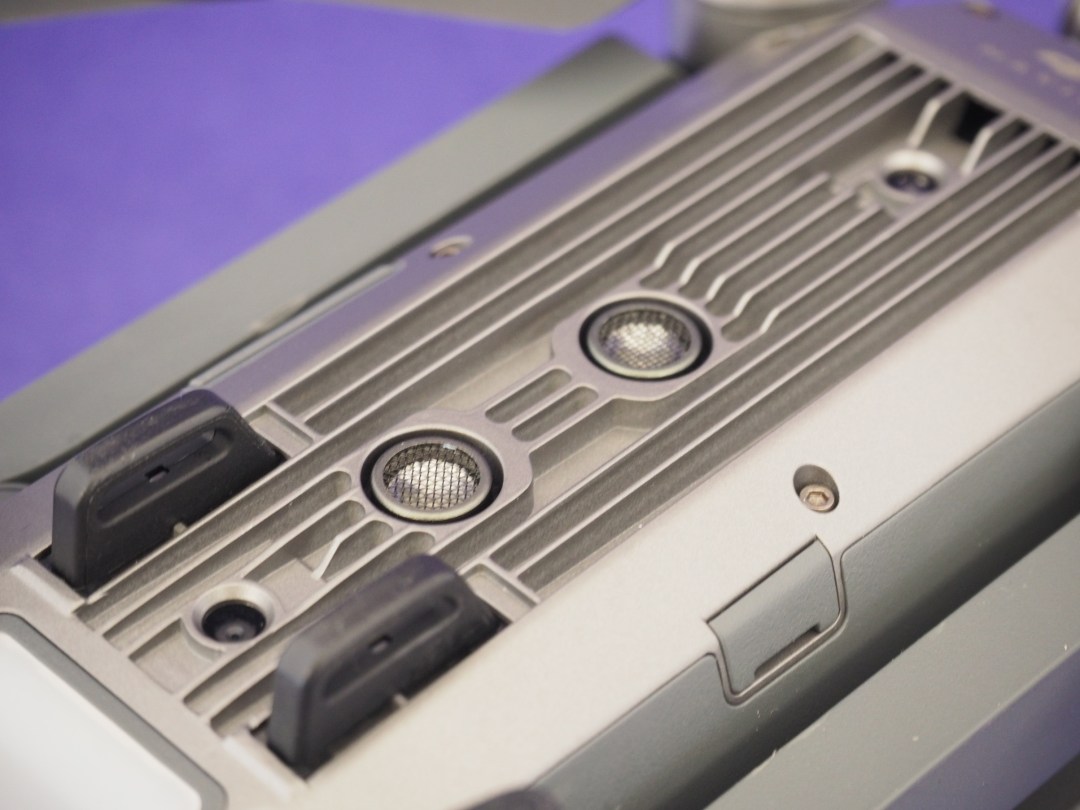
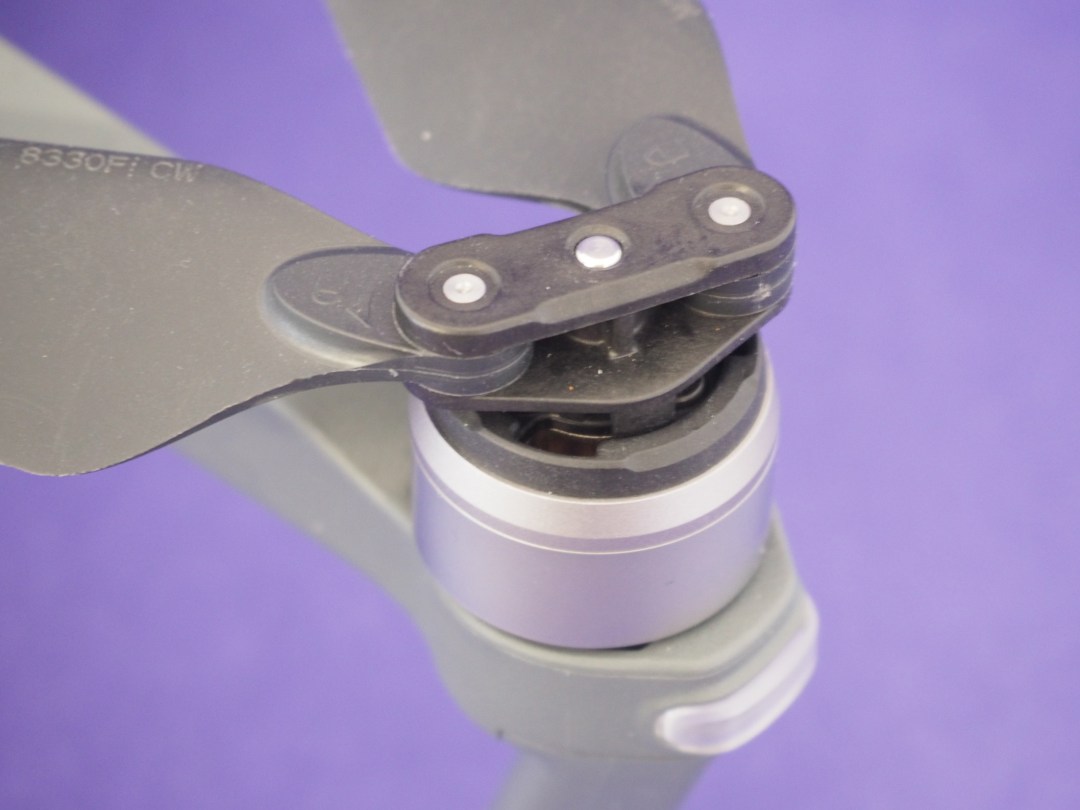
Keeping the Mavic stable in the air needs cameras – lots of cameras. It’s got five, including the main 12MP, 4K video-recording one sat up front.
Two front-facing cameras handle obstacle avoidance, so your expensive new toy doesn’t end up smashed to bits because you were too busy trying to take a drone selfie. It’ll physically stop the drone a few metres away from any walls, trees or anything else likely to cause it harm – but only when you’re flying forwards, as that’s where the cameras are.
It was pretty hair-raising trying it out, but yes – it does (thankfully) keep you safe and in the air.
Another two cameras point downwards as part of the visual positioning system – the thing that keeps you level when you’re flying indoors.
They also kick in when you take off and land, as part of the Mavic’s unique Precision Landing system. This records video as you take off, then plays it back and matches the footage when you land. It even rotates back to the same direction, and it’s accurate down to one meter. That easily beats GPS-assisted landings, which are only accurate to a 5-10m radius.
It’ll make all the difference when landing on docks, jetties and rocks where a few feet either side would mean a drowned drone. I didn’t have any of those handy, but a cardboard sign with a hastily scrawled X on it was enough for the drone to find and land safely.
GPS and GLONASS keep track of where you’re flying when you’re outdoors, and stop you flying into restricted areas like airports. Two ultrasonic sensors, two compasses and two IMUs (drone brains, basically) are in there too, so there’s redundancy in case one fails.
Basically, it’s got two of everything you’ll need to get up in the air, and stay there without having to really do anything with the controls.
It all worked flawlessly in my testing, letting me concentrate on getting jaw-dropping footage.
HEX APPEAL › Yuneec Typhoon H review
KEEPING TRACK
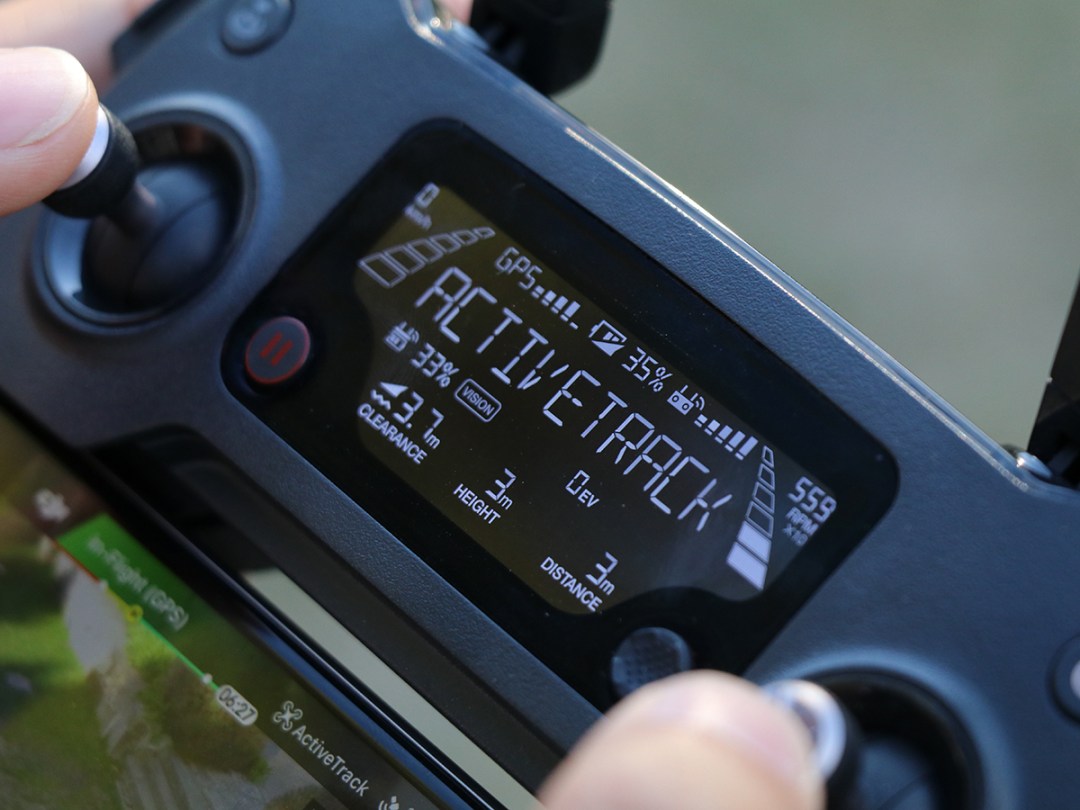
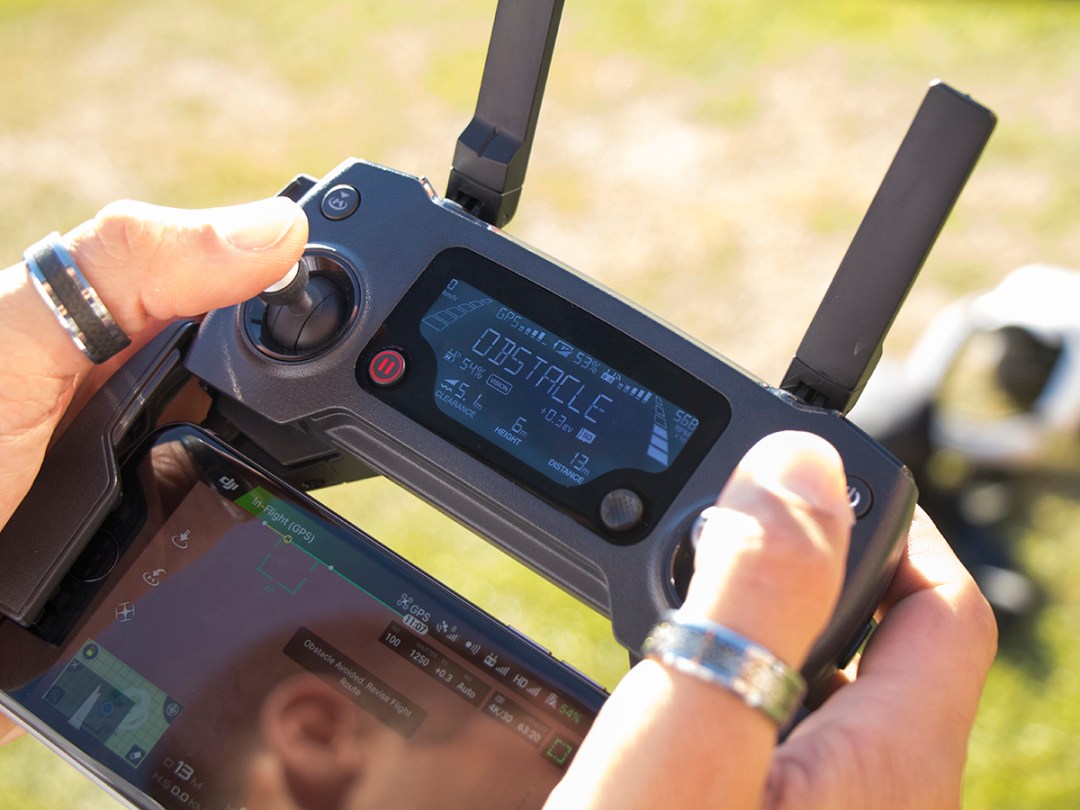
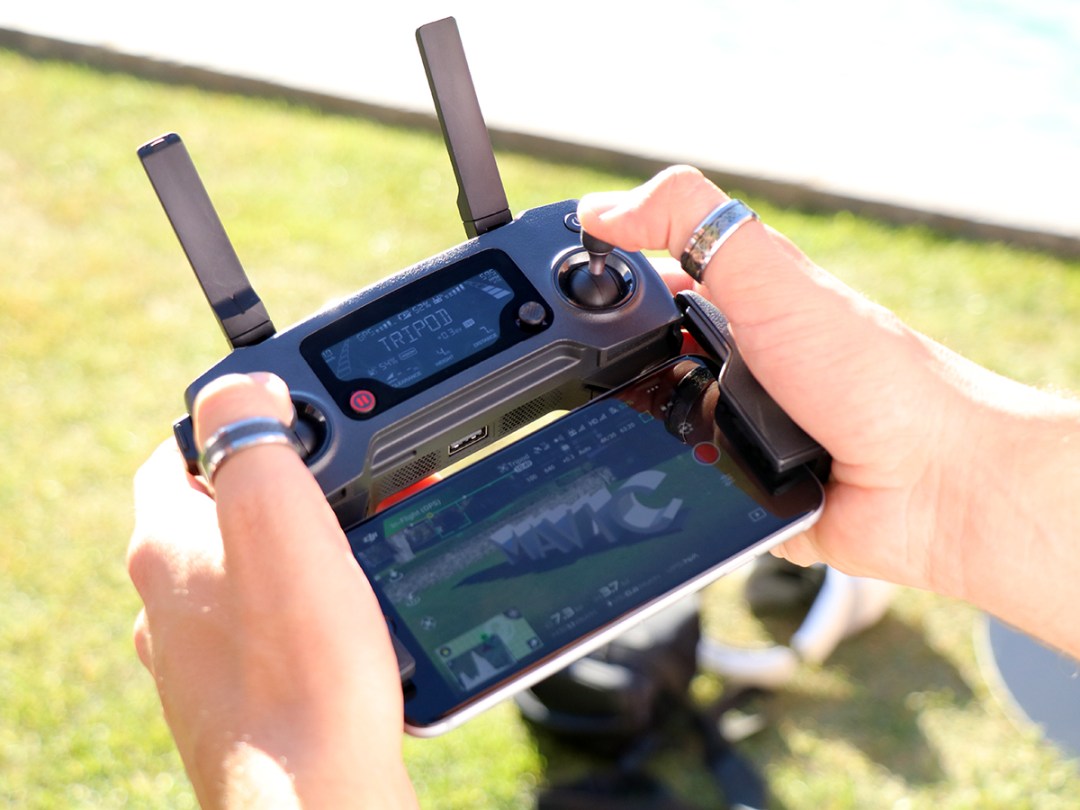
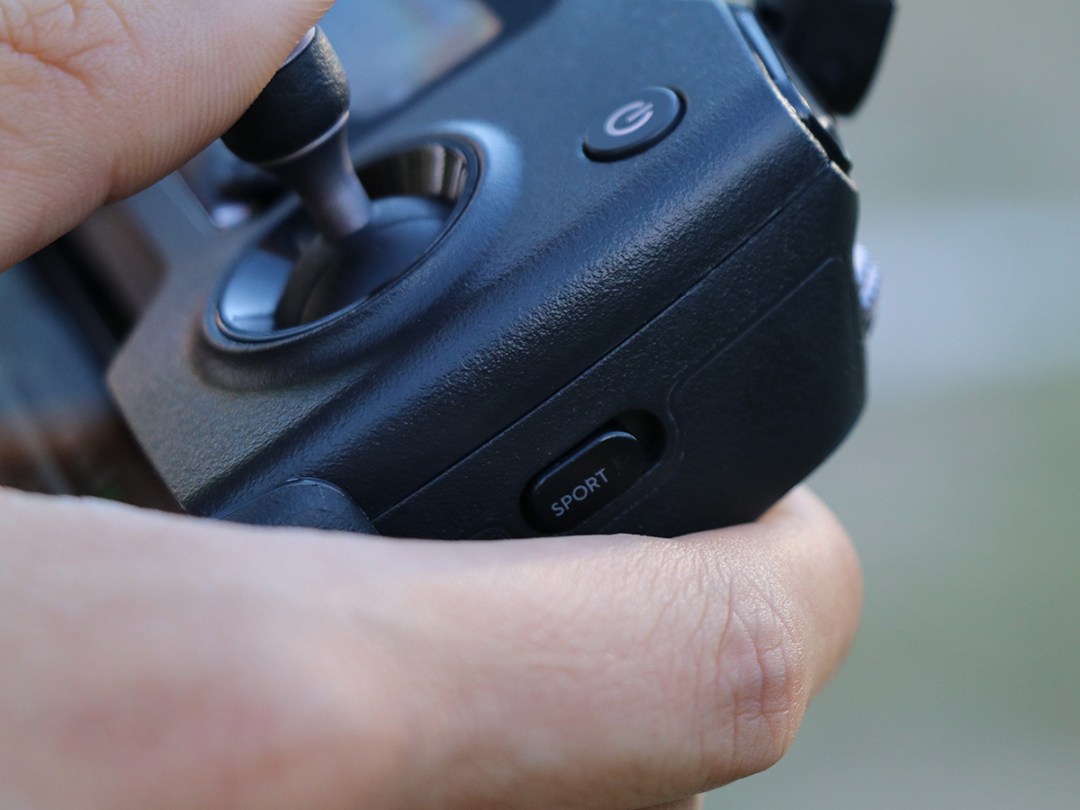
I even left the Mavic to do a lot of the flying itself, putting DJI’s excellent active track modes to the test.
Basically, Active Track keeps your subject in the main camera’s frame, following them automatically. It uses computer vision to recognise objects, and has really improved a lot since it first showed up in the Phantom 4.
When I was flying, it picked out a football player and kept him in focus while another player dribbled the ball around him – even the matching kits couldn’t confuse the system.
Terrain Follow is new for 2016, letting the drone go up and down hills as it follows you. It looks like it’ll be great for hiking, downhill mountain biking and snow sports. You can still pull off circle and spotlight tracking too – tricky moves for a novice pilot to do manually, but just a button press away here.
Tripod mode is the other new addition. This drops the drone’s speed dramatically, but ramps up the sensitivity on the controller. DJI reckons it’s great for flying in small spaces, or for getting more cinematic shots. It’s also stable enough for three second long exposure shots at night – expect some incredible light trails once the Mavik gets into the hands of pro photographers. I couldn’t pull off anything quite so dramatic, but it does definitely work as advertised.
Last, but by no means least, is Sport mode. This was pretty scary on the Phantom 4, but it’s practically change-of-underwear-required terrifying with the Mavic. It’ll hit 65kmph at full tilt, once you toggle the mode on using the switch on the side of the controller.
I was blown away with how agile it was at speed – and very happy to be in a wide open space where I couldn’t end up embedded in any trees or walls.
The redesigned intelligent flight battery is usually good for 27 minutes of flight time, but you’ll drain it a lot faster in Sport mode. It takes about an hour to recharge, but you can swap it out for a new one in seconds. It’s a good idea to invest in a spare or two if you’re planning a full day of flying.
LIKE A BIRD › Parrot Bebop 2 review
TAKE CONTROL
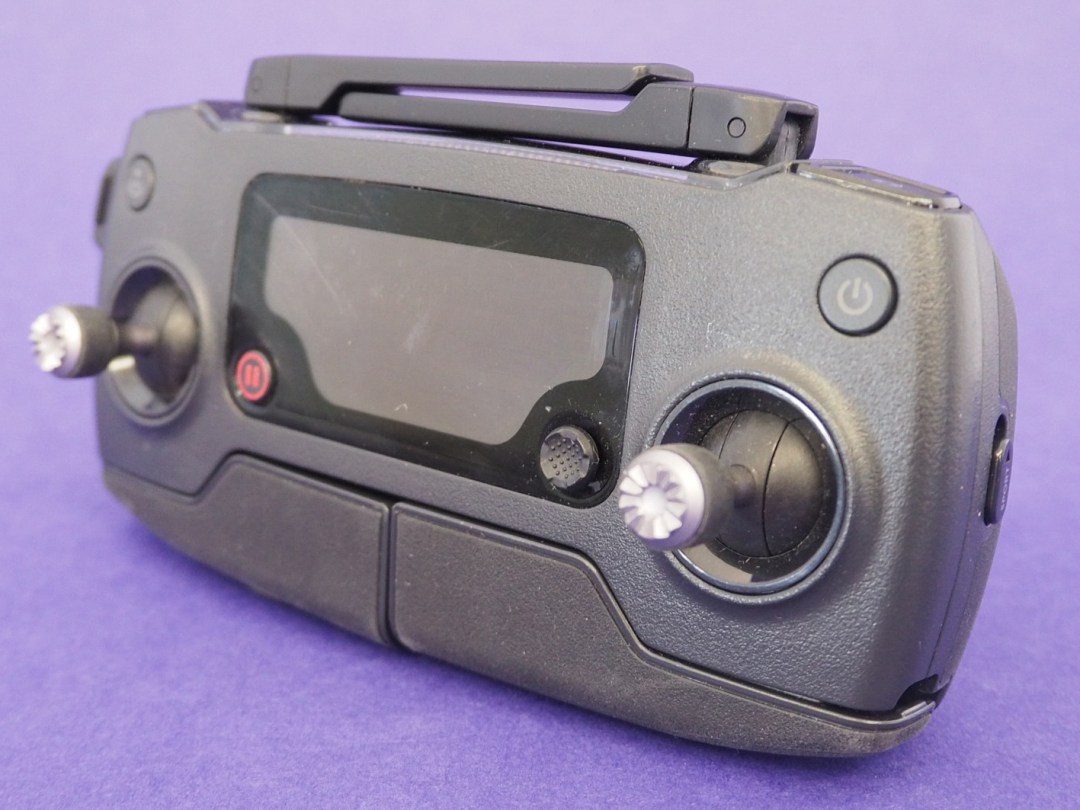

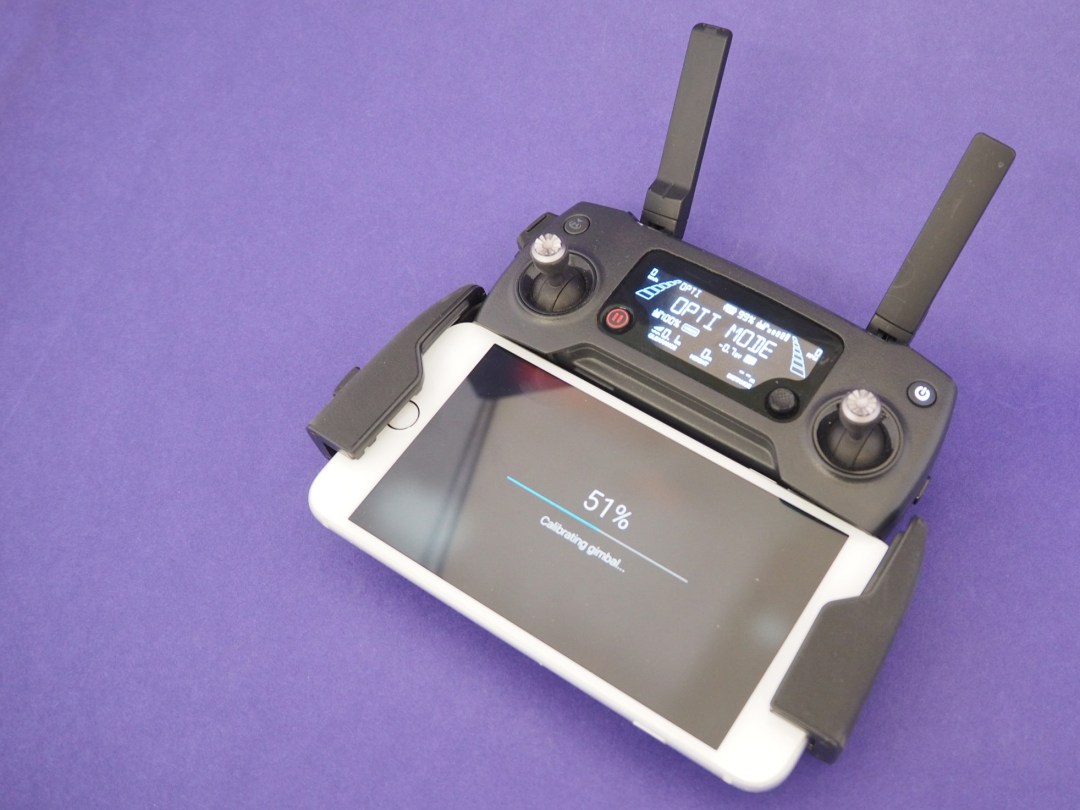
A tiny drone deserves a tiny controller to match, and DJI has delivered with the Mavic.
The pocket-sized remote unfolds out to about the size of a PS4 controller, with slots for squeezing an iPhone or Android smartphone into. There’s a built-in microUSB cable, which can be swapped out with the USB-C or Lightning cables (included in the box) to match your phone.
Twin sticks for flight controls, twin dials for gimbal and camera control, dedicated shutter button, customisable menu shortcut keys and a dedicated return to home button mean you’ve got pretty much everything you’ll need in reach of your thumbs.
There’s even a small LCD screen built in for showing simple flight data. For everything else, there’s DJI’s Go app.
The flip-out antennas let you stay wirelessly connected to the drone from up to 7km away – and with a 1080p live video feed to your phone to boot.
This new Ocusync system is a massive improvement over the 720p LightBridge 2 in the Phantom 4, and was solid as a rock while I was flying – even with five other Mavic Pros flying nearby.
It’s amazingly comprehensive seeing how small it is, and I didn’t ever feel like I wanted more controls – but I can see some drone pros might be disappointed there’s no way to bolt a big screen tablet in there instead of a phone.
GOGGLE BOX
CAUGHT IN THE BREEZE › Yuneec Breeze 4K review – hands on
PHONE ALONE
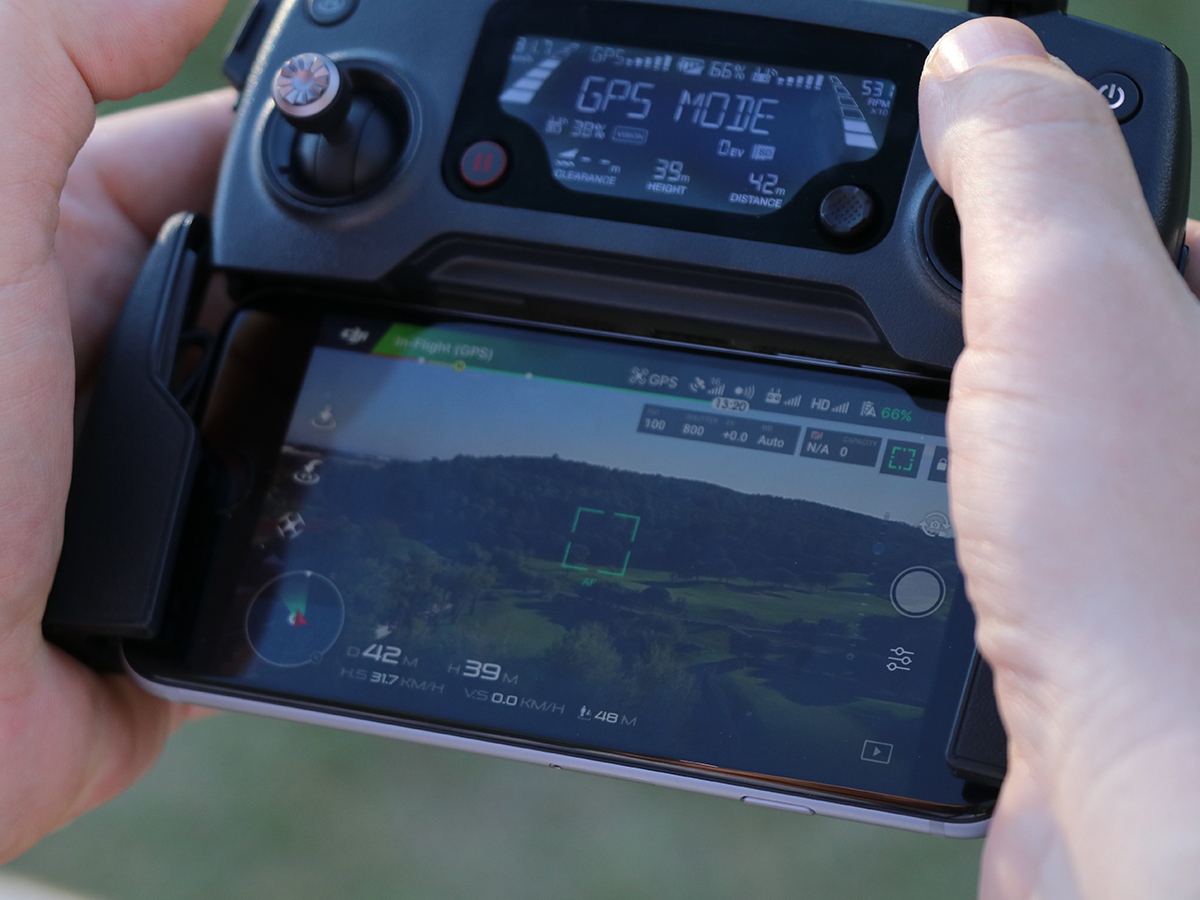
You don’t even need the controller for short distance flying – just your phone. A switch on the drone toggles between remote and Wi-Fi control.
The DJI Go app puts two virtual sticks onscreen, so it controls in pretty much the same way, and you don’t have to mess about tilting your phone either. I’ve tried gyroscope flying on other drones and trust me, this is better.
Because you’re using Wi-Fi instead of Ocusync, range takes a major hit, but that’s hardly surprising. DJI reckons you’ll get about 50m of altitude and 80m of distance – realistic figures, based on my experience. Parrot says the Bebop 2 can go further, but after testing that theory, I can categorically say it can’t.
It’s a handy little extra that should come in useful when you’ve not got a lot of room in a bag, or when you just want to take a quick aerial snap.
NEED FOR SPEED › How to build a race-ready drone for under £300
IN A SNAP
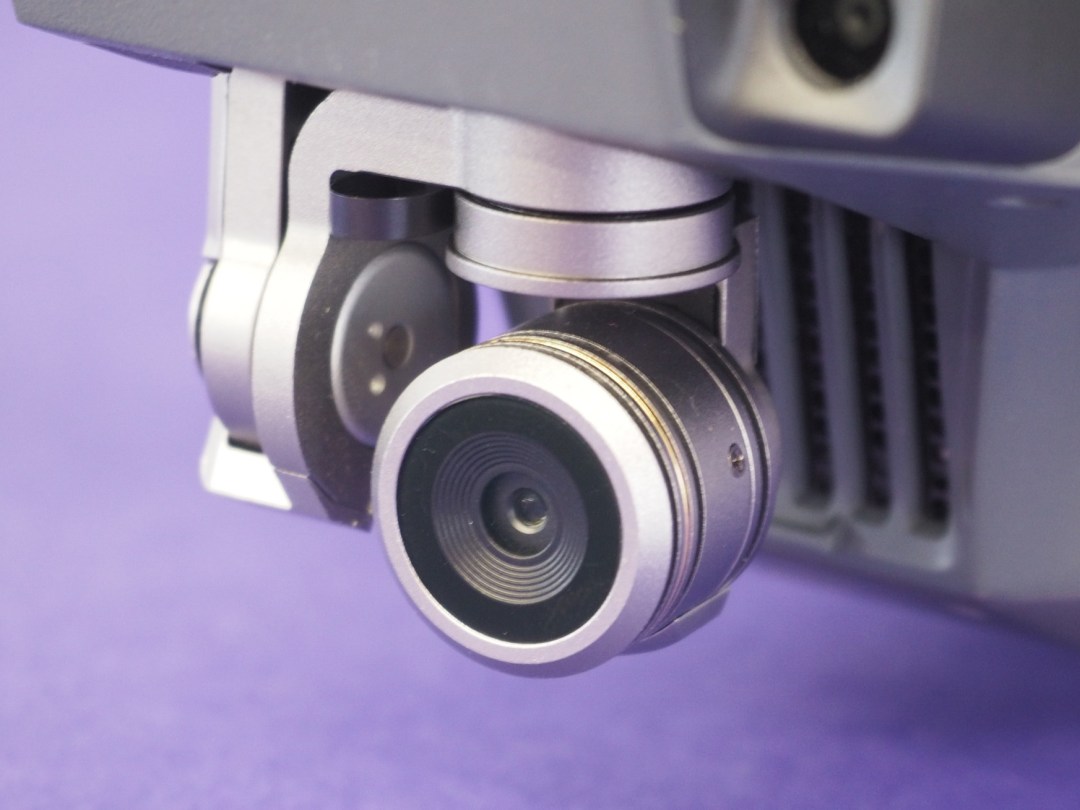

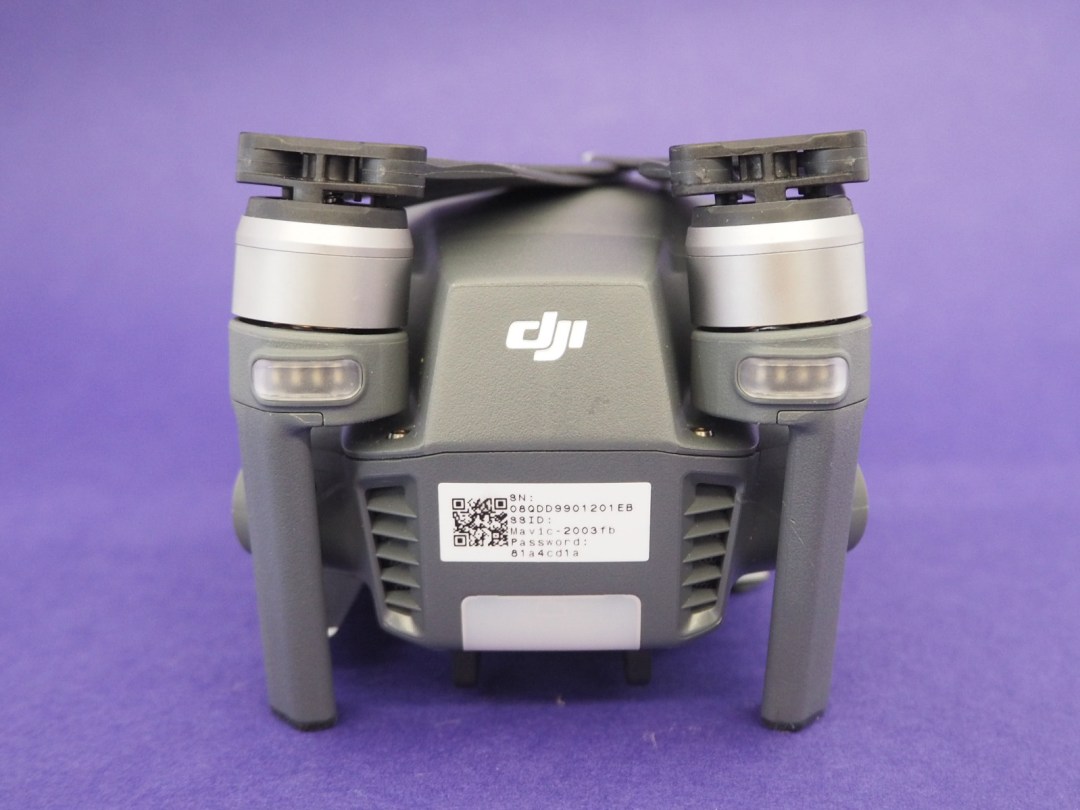
Speaking of the camera, it’s an absolute beauty. The 1/2.3in, 12MP sensor can shoot stills in DNG RAW as well as JPEG, so you can edit them later, and it’ll do 4K video at 30fps.
The field of view is a little smaller than the Phantom 4, but 78.8° is still more than enough for some cinematic video clips.
A 3-axis gimbal keeps things stabilised, so your shots are shake-free and your videos stay smooth. No surprises here – it works brilliantly, just like it does on the Phantom. As well as shrinking in size, it’s picked up a new trick, too – you can rotate it 90° for vertical filming. That certainly beats trying to fly sideways.
You can change the point of focus for the first time, too, which should keep serious photographers happy.
For everyone else: gesture-based selfies, of course. Rather than snap yourself holding the controller, you can wave at the Mavic to start it tracking, then make a frame motion with your hands to start a three second timer. My friends can expect my Facebook page to be filled with drone selfies very soon.
WHAT THE SHELL? › Powervision’s new drone takes a crack at DJI
IMAGE QUALITY
In bright light, the Mavic Pro can easily hold its own against the Phantom 4 – no mean feat, seeing how it’s equipped with a much smaller 4K camera.
The narrower field of view works to its advantage here, meaning image quality can actually be higher, as you’ve got more pixels focused on your scene, rather than trying to pack more into every shot.
It looks like there’s less digital sharpening going on here, too – which might make things a little less detailed, but it’s mostly personal preference. I’m a fan of the Mavic’s stills, but you can always add more sharpness later in editing.
Colours are fantastic, with vibrant hues making your pictures look gorgeous – no matter how high up in the air you are. Having to remember to tap to pick a point of focus can leave a few shots looking blurry, but after a few flights you’ll remember and have much greater control over your shot composition.
Things fall down a bit in low light. You can bump up the ISO to 3200, but you’ll want to stick to ISO 800 for the best results. This is where the Phantom 4’s bigger camera setup pays off.
Still, this is easily one of the best consumer drones you can get for picture quality – if you want better, you’ll need to invest in an aerial camera platform with interchangeable lenses.
POCKET ROCKET › Zerotech Dobby review
DJI MAVIC PRO VERDICT




DJI hasn’t made any sacrifices to shrink the Mavic down to a size you really can take anywhere. In fact, it’s got more tech than you’ll find in the Phantom 4.
Those folding arms work a treat, and the matching compact controller is brilliant too.
It’s a lot more compact than GoPro’s Karma drone, and has more smart flight modes to boot. The Karma’s removable gimbal admittedly makes it more flexible on the ground, but I’ve no doubt the Mavic has the edge in the air.
Yes, the Mavic is expensive, but when it’s just about manoeuvrable enough for racing, takes fantastic photos and videos, and is simple enough to fly that even a total novice can do it without having to worry about crashing, it really does tick every box.
Unless you’re a professional that needs an aerial camera platform for a hardcore video rig, this is all the drone you should need.
Tech specs
| MAX SPEED | 40MPH in Sport Mode without wind |
| FEATURES | Active Track, Terrain Follow, Circle Tracking, Spotlight Tracking, Tripod mode, Sport mode |
| CAMERA | 1/2.3”, 12MP CMOS w/ 78.8° FOV, f/2.2 lens |
| CONNECTIVITY | Wi-FI/OccuSync, proprietary RF |
| COMPATIBILITY | iOS, Android |
| BATTERY LIFE | 27 minutes |
| DIMENSIONS | 83x83x198mm (folded), 734g |
Stuff Says…
A real marvel of miniaturisation, the Mavic is the ultimate hobbyist drone. It’s not stable enough for video pros, but still takes fantastic footage and is smart enough not to crash while you’re concentrating on the camera.
Good Stuff
Both drone and controller are incredibly compact and portable
All the advanced features you’d expect from a bigger drone
Great photo and video quality
Bad Stuff
Compact legs mean being more choosy with take-off and landing zones
Smaller, lighter body means high winds make flying trickier than with a Phantom



